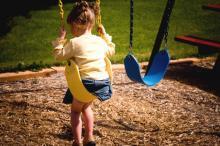
The Association for Childhood Education International (ACEI) and Alliance for Childhood joined together to launch a 10-year initiative, the Decade for Childhood 2012-2022, during the Global Summit on Childhood held in Washington, D.C. in March of 2012. Concerns about the rapid cultural and technological changes currently occurring combined with the ongoing problems of poverty, neglect, and abuse prompted the need for a platform to support a global conversation about childhood and the threats to the healthy development of children.1
Exploring the state of childhood, the underlying premise is that children develop the image of what it means to be a human being during childhood, and this image leads to how they will perceive and fashion the societies in which they live as adults. As many children lead more fragmented, hurried, and anxious existences, some of the results have been evidenced in rising rates of childhood obesity, hyperactive disorders, depression, and stress.2 Too often children grow up without the basic skills needed today, not only academically, but also with the social skills of empathy, civility, and ethical behavior. The effects of an unhealthy childhood will lead to weakened societies that need educated, creative, compassionate, and well-rounded citizens to address the complex issues they will face.3
Feeling the urgency to create a better future for children, the Decade for Childhood seeks to answer questions such as:
- What is our view of the human being and how does that affect our view of childhood?
- Have changes in child-rearing practices and societal expectations of children served children well or contributed to a decline in their overall well-being?
- What supports children—and ultimately all of us—in creating strong relationships, a healthy environment, and opportunities for lifelong growth and learning; and how do we make these a normal part of every child’s life?
Working together with individuals and organizations from many nations, their aim is to provide a platform for communication and collaboration to examine the issues from varying sectors of expertise including education, health, ecology, recreation, sociology, and psychology.4
Their stated goals of the decade are:
- Promote and protect childhood as a unique and critical stage of human development
- Explore childhood from interdisciplinary and cross-cultural perspectives
- Identify issues that erode childhood
- Advocate for children’s rights as a vital element of childhood
- Translate the “Ten Pillars of a Good Childhood” into policies and practices that benefit all children.5
The Ten Pillars of a Good Childhood were developed as a starting point to guide the considerations of what constitutes a good childhood in today’s world. They are meant to lead to the development of policies and practices for parents, teachers, and caregivers to ensure a good childhood for children. They are:
- Safe and secure places for living and learning and access to health care, clothing, and nutritious food
- Strong families and loving, consistent caregivers
- Social interactions and friendships
- Creative play and physical activity
- Appreciation and stewardship of the natural environment
- Creative expression through music, dance, drama, and the other arts
- Education that develops the full capacities of the child—cognitive, physical, social, emotional, and ethical
- Supportive, nurturing, child-friendly communities
- Growing independence and decision making
- Children and youth participating in community life6
Recognizing that children should have a voice in what they feel they need in order to lead successful and fulfilled lives, the Decade for Childhood explores ways to include the ideas and opinions of children in examining the challenges of childhood.7 The Decade for Childhood invites individuals and organizations to join their global initiative to work with others to create positive conditions in which all children can grow with hope, joy, freedom, and promise for the future.8
- 1. “The Decade for Childhood.” Association for Childhood Education International. < http://www.acei.org/programs-initiatives/the-decade-for-childhood-2011-2021.html > 11 April 2012.
- 2. “The State of Childhood.” Association for Childhood Education International. < http://www.acei.org/programs-initiatives/the-decade-for-childhood-2012-2022/page-2.html > 11 April 2012.
- 3. “Research and Advocacy.” Alliance for Childhood. < http://www.allianceforchildhood.org/ > 12 April 2012.
- 4. Op. cit., “The Decade for Childhood.”
- 5. “Goals of the Decade.” Association for Childhood Education International. < http://www.acei.org/programs-initiatives/the-decade-for-childhood/page-4.html > 11 April 2012.
- 6. “The Ten Pillars of a Good Childhood.” Association for Childhood Education International. < http://www.acei.org/programs-initiatives/the-decade-for-childhood/page-5.html > 11 April 2012.
- 7. “Children Investing in Childhood.” Association for Childhood Education International. < http://www.acei.org/programs-initiatives/the-decade-for-childhood-2012-2022/page-3.html > 11 April 2012.
- 8. “Joining the Decade for Childhood.” Association for Childhood Education International. < http://www.acei.org/about-us/decade-for-childhood-participation-form.html > 11 April 2012.

